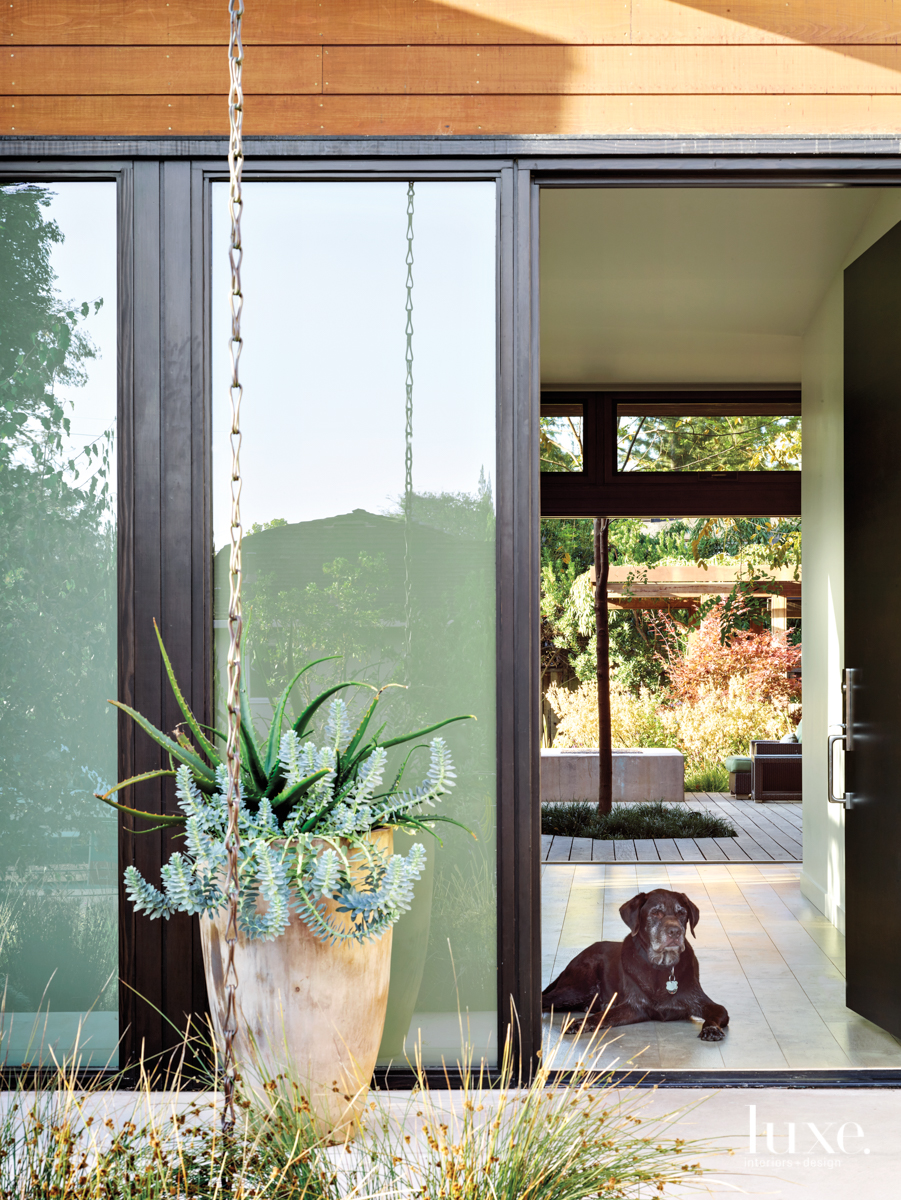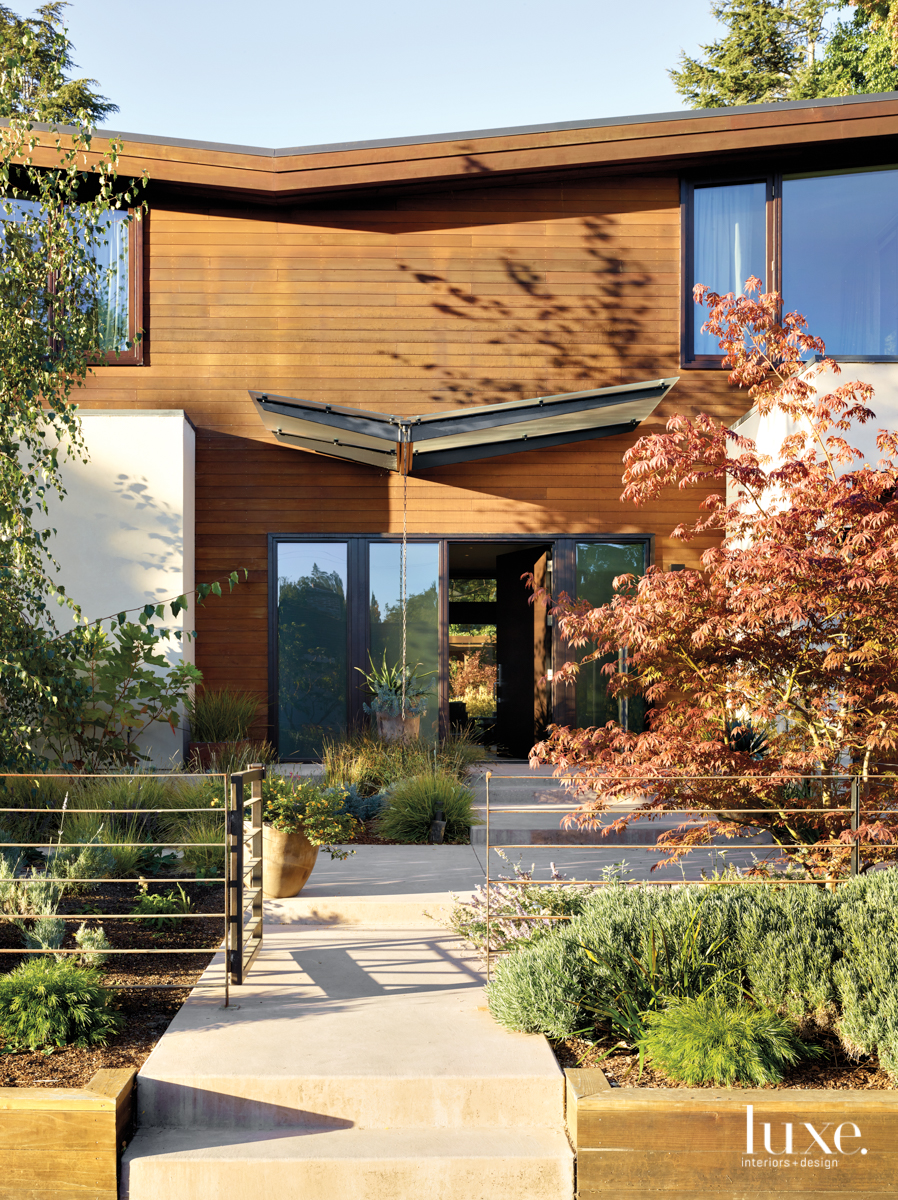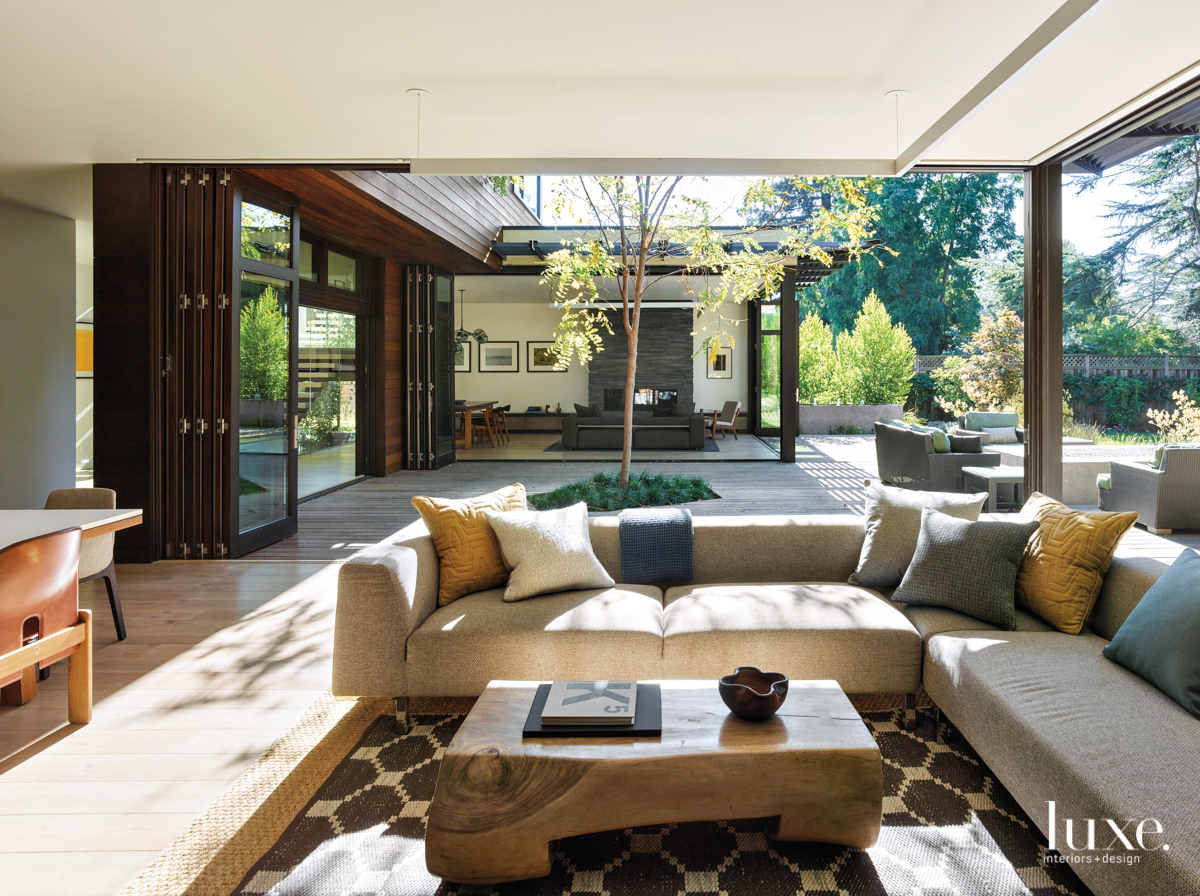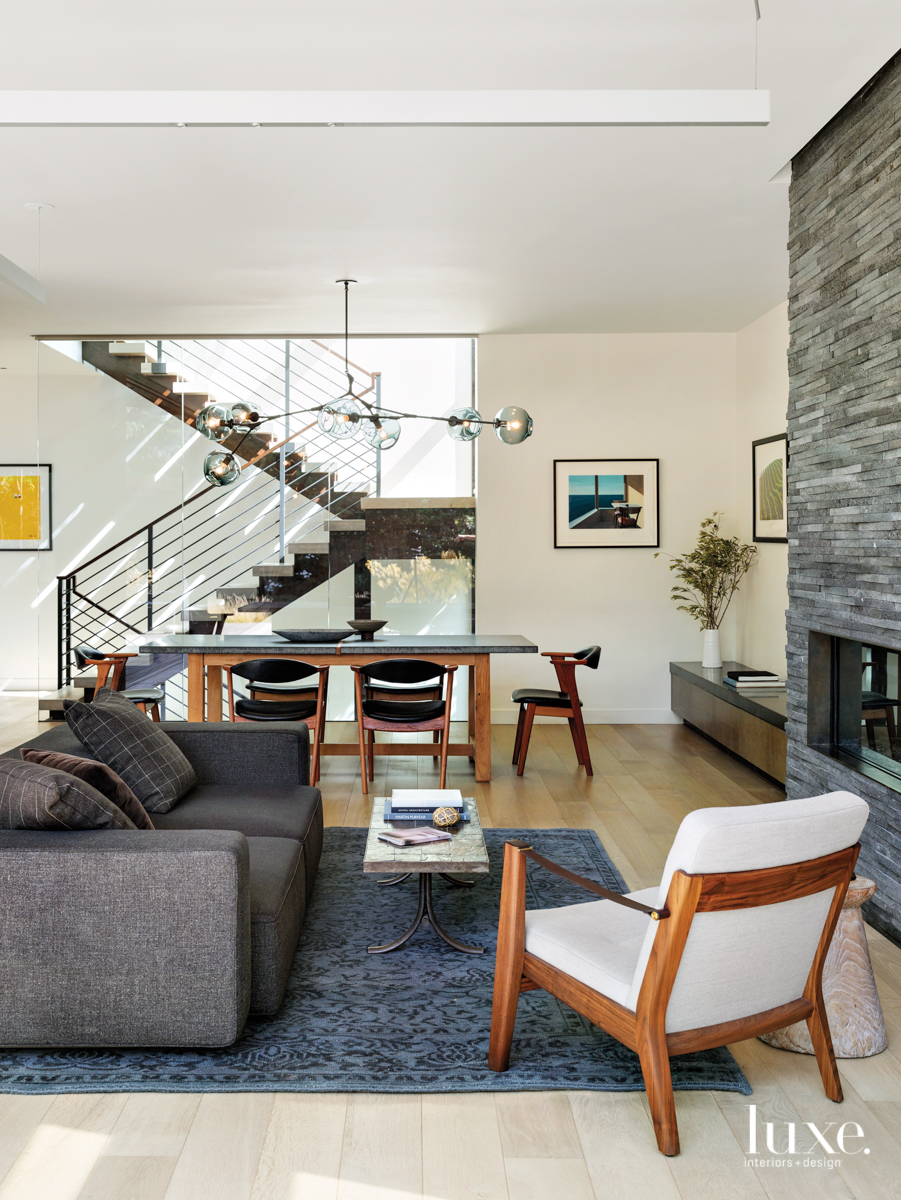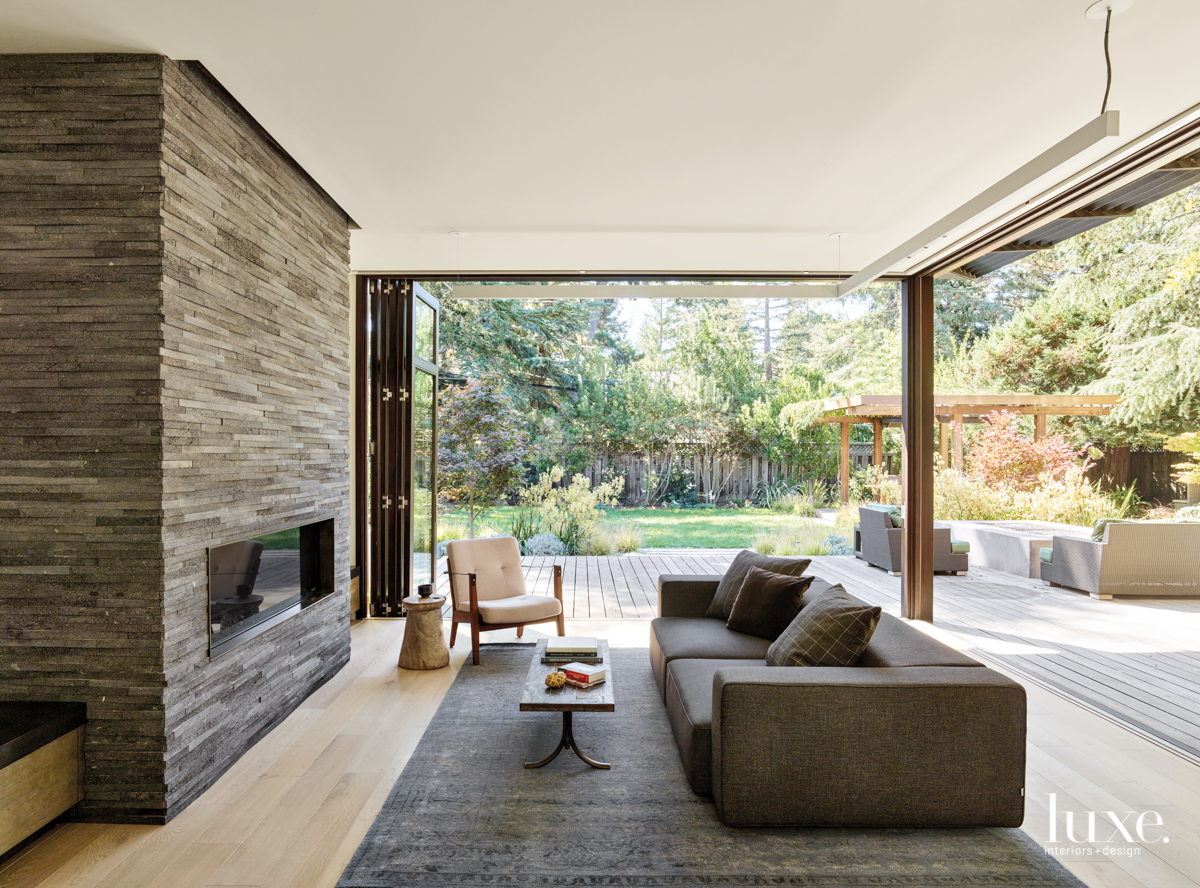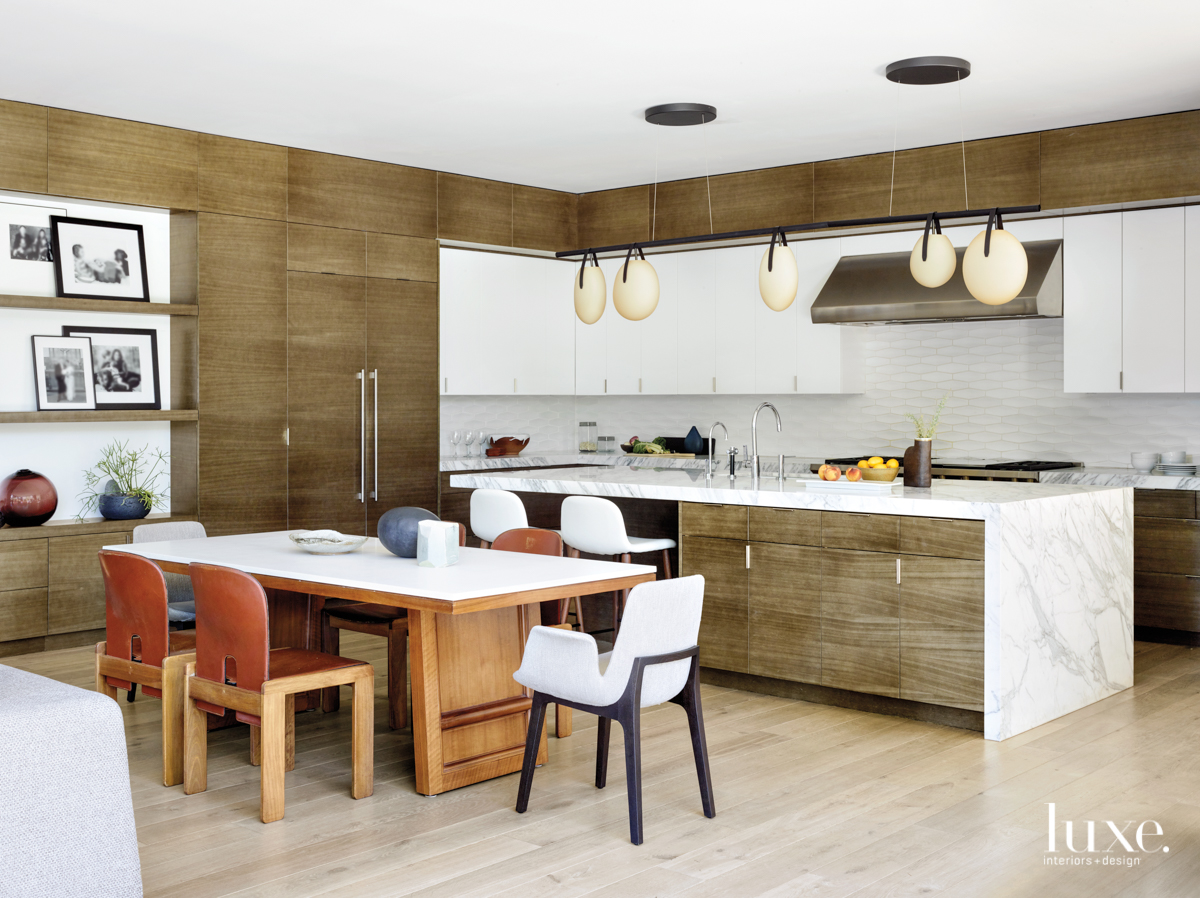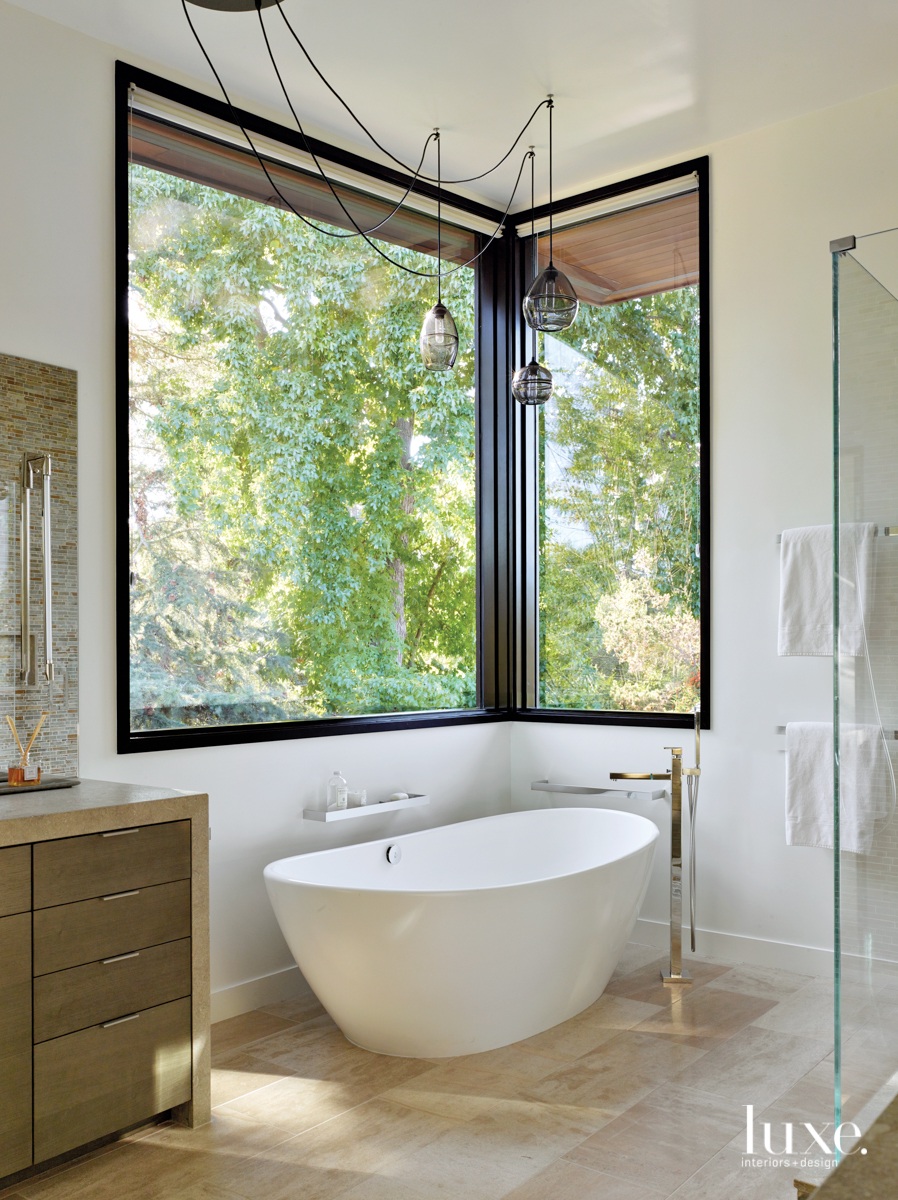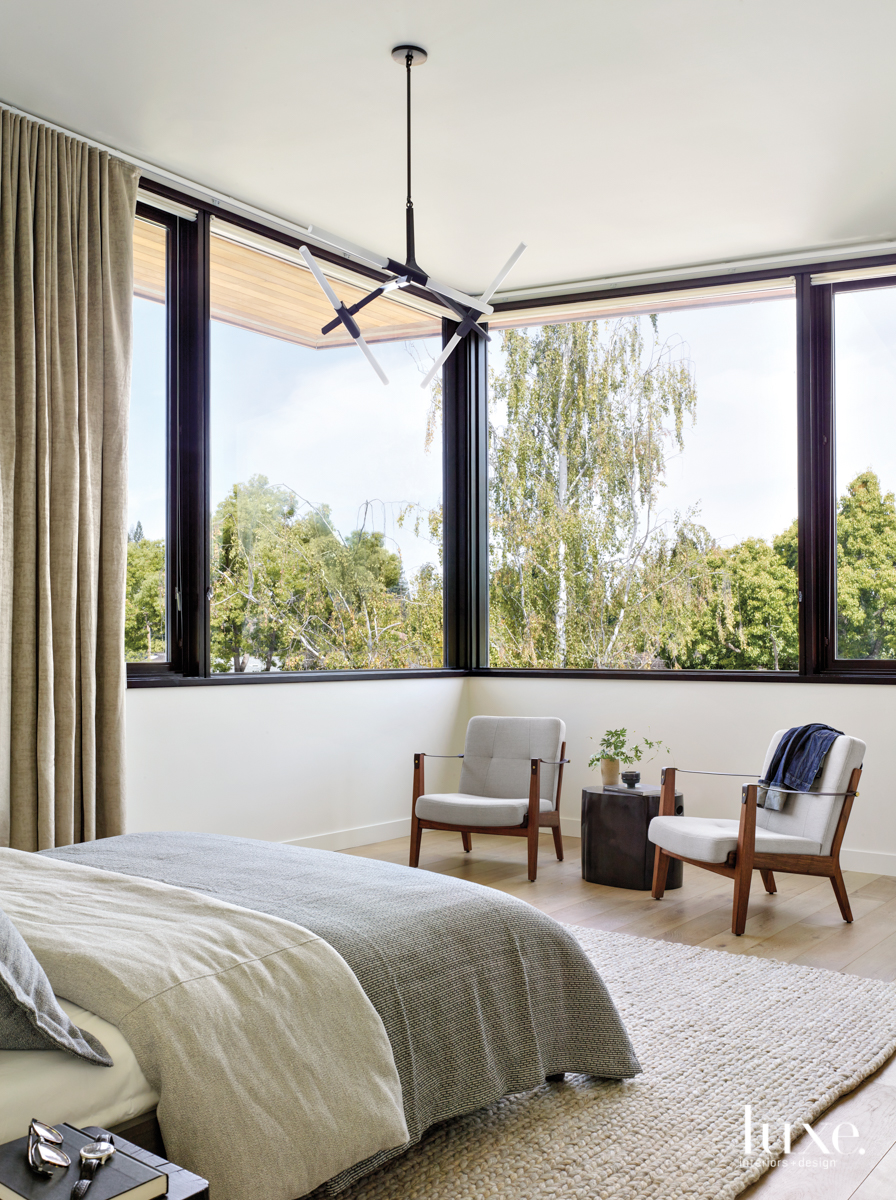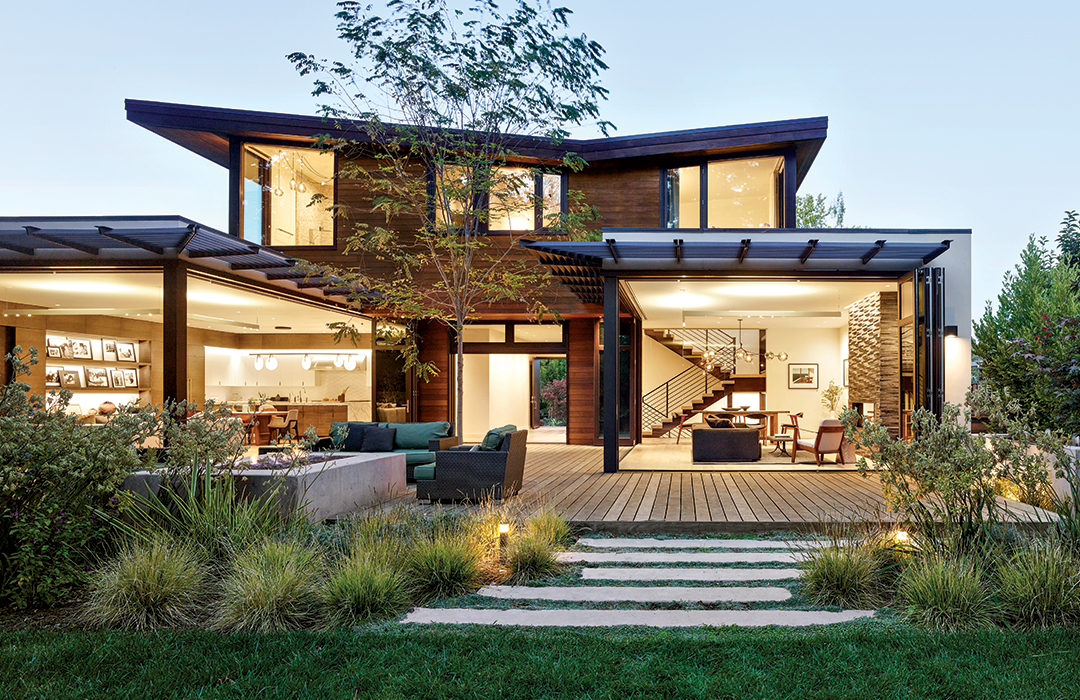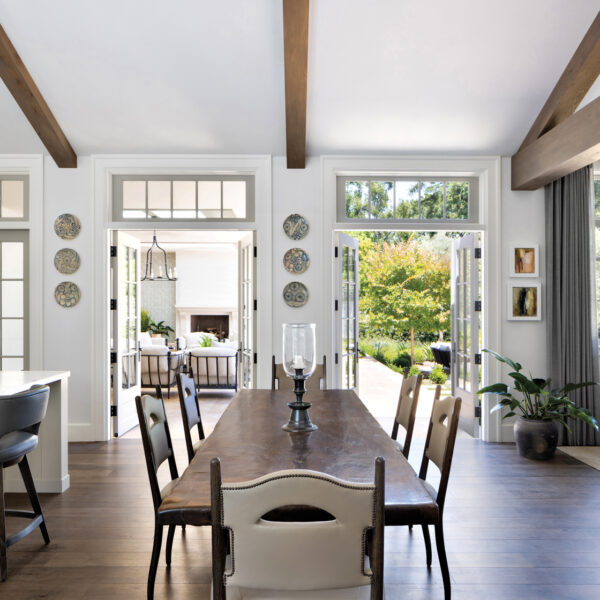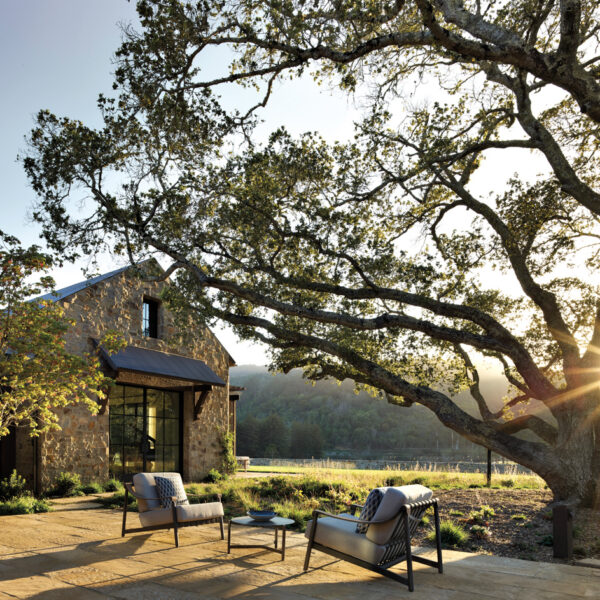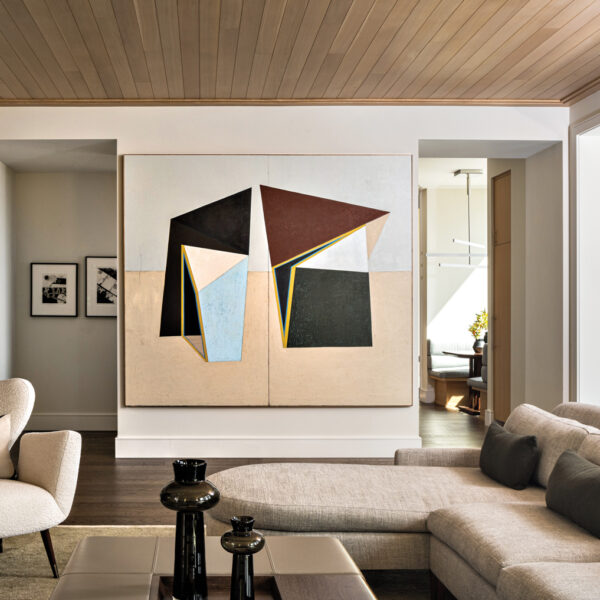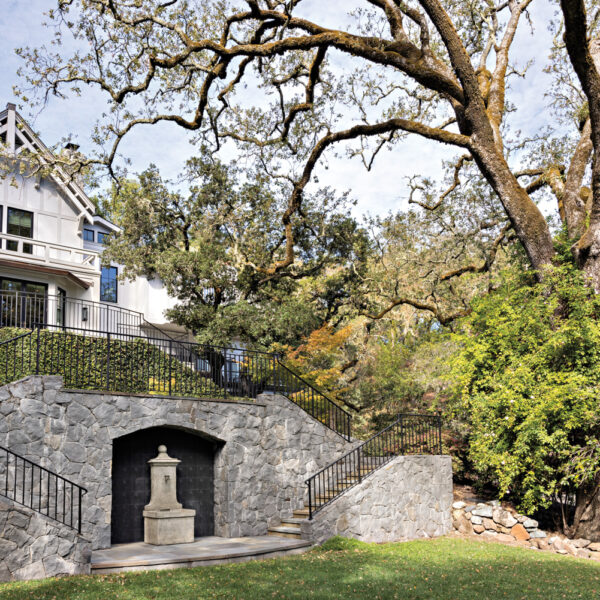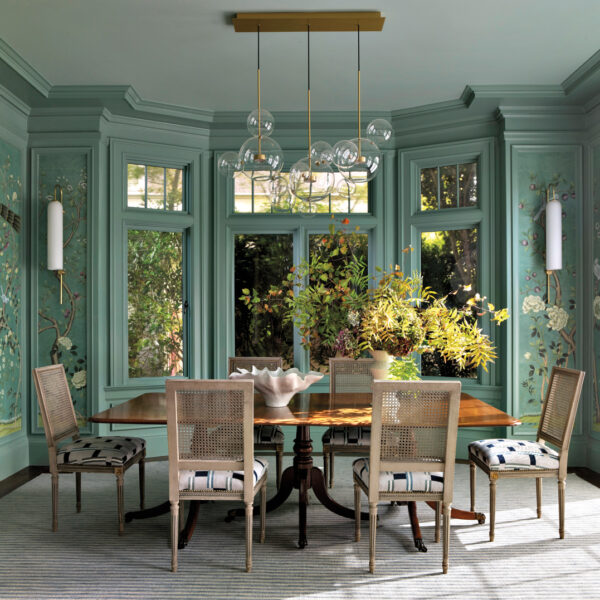When a pair of technology executives started thinking about their Menlo Park, California, dream home, they engaged in the kind of futuristic thinking that’s made Silicon Valley famous. They imagined a dwelling not for the family they had at the time–husband, wife and dog–but for the one they were dreaming of. “We didn’t actually have any children yet–other than our chocolate lab, who is our first baby,” says the wife. “What we did have was an aspirational vision for the life that we hoped to create together over the years.” Architecturally speaking, that outlook was foremost kid-friendly with a lot of open space to play, yet sophisticated (elegant lines, beautiful materials and a reverence for natural light), and a strong and seamless indoor-outdoor experience, as they both love nature and the near-perfect weather Menlo Park offers.
Architect William Duff joined the couple for many backyard discussions, trying to figure out if it was possible to do their future life justice by merely reconfiguring their longtime home, which he describes as an “unremarkable” 1950s tract house. “Taking into consideration their wish list, we decided it would be best not to ‘Frankenstein’ the home by simply grafting new stuff onto it,” says Duff. All agreed it was better to tear down the old home and start from scratch.
Of the designs for the new house drafted by Duff and his team, architects Jim Westover and Michelle Liu, it was a three-level dwelling with a distinctive butterfly roof–a Le Corbusier hallmark of postwar American residential architecture–that resonated most with the homeowners. “That asymmetrical wing span is a very compelling way to give the home distinction, expression and energy,” says Duff.
But the design’s sentimental high note is the courtyard–an exalted version of the one found in the wife’s ancestral home in India, which also featured a solitary tree. “We both have immigrant backgrounds–my husband was born and raised in Ireland–and we wanted our home to integrate elements from our cultural heritages,” says the wife.
When the accordion glass walls enclosing the rooms flanking the central outdoor space–living room on one side, family room on the other–are folded away, the area becomes the heart of the home. “The landscape was designed to create a seamless transition from the indoors to the outdoor living spaces,” says landscape architect Richard Radford. “We blurred the lines between the two, and expanded the home’s living area into the garden environment.” On sunshine-drenched days, the family–who, by the time the house was completed, had added two children–moves effortlessly through this indoor-outdoor expanse, with ipe decking that’s nearly flush with the white-oak planks inside to make a smooth surface for tricycle wheels and small bare feet. At dusk, this area is particularly magical, thanks to Duff’s minimalist approach to illumination. A few strategically placed up-lights and recessed lighting are designed to let the pretty twilight take precedence over high wattage man-made lights. “I didn’t want anything distracting you from feeling the openness and cleanliness of the space,” says the architect.
When it came to the interiors, designer Robbie McMillan took a “less-is-more” strategy. “That meant incorporating fewer pieces of furniture, which are larger in scale, to anchor the rooms, as well as working with a range of textures and materials to provide an organic warmth and softness to each space,” he says. The concept is illustrated in the family room, where a low-backed sectional with strong lines and a chunky-wood coffee table are able to hold their own in the high-ceilinged space. “The rooms demand furniture groupings with clean lines and a sense of weight and volume to define themselves,” McMillan says. The designer opted for low seating to accommodate clear views to the backyard.
Dinner parties usually start in the living room, next to the fireplace that’s clad in lava stone slabs that jut out at different lengths and angles, both for textural interest (a counterpoint to the smooth floors and low, sleek profiles of the furniture) and visual drama (the shadows created when light washes on the surface of the hearth give the room’s otherwise quiet demeanor more expression). Since the formal dining room is adjacent, it’s just a few steps to the table, where guests have the choice of enjoying two compelling perspectives: Facing the naturalistic landscape of the drought-tolerant plantings by Radford or the modernist glass-and-metal staircase. “The staircase is a very sculptural–and at times kinetic–element that connects the spaces in the house,” says Duff. “You really see the stairs come to life when people are moving up and down them. You get a very pleasant, homey feeling when you see the house in motion, so to speak.”
It’s an easy thing to witness here, given the relaxed flow from one area to another. While natural materials take the edge off this modern floor plan, it’s the movement within the home that gives it true warmth. As the wife puts it, “Living out the story we imagined for our family and our life has been the home’s greatest gift to us.”

